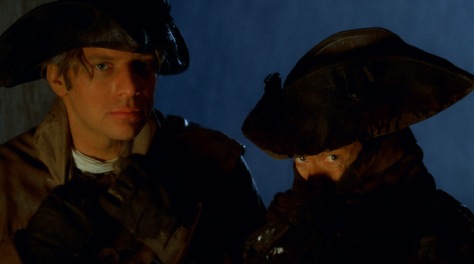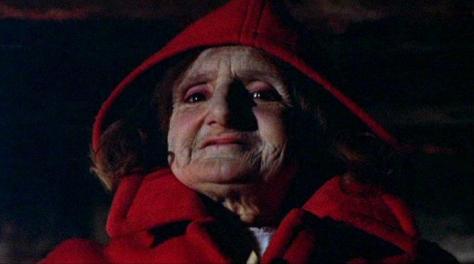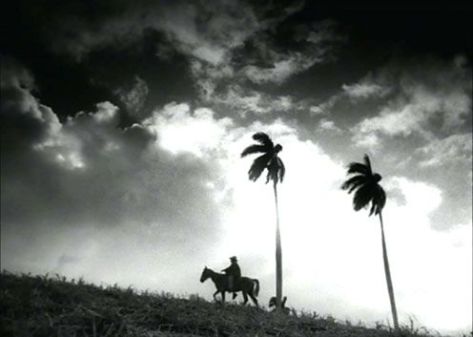By Dennis Hartley
(Originally posted on Digby’s Hullabaloo on April 14, 2018)

For some reason, whenever someone refers to the 1960s as “a turbulent decade”, I always think of one year in particular. If I may co-opt the meteorological “F-Scale” as a metaphor, while most years of that decade were stormy, 1968 was the only one to hit F-5.
As Jon Meacham wrote in a Time article from January of this year:
The watershed of 1968 was that kind of year: one of surprises and reversals, of blasted hopes and rising fears, of scuttled plans and unexpected new realities. We have embarked on the 50th anniversary of a year that stands with 1776, 1861 and 1941 as points in time when everything in American history changed. As with the Declaration of Independence, the firing on Fort Sumter and the attack on Pearl Harbor, the events of ’68 were intensely dramatic and lastingly consequential. From the assassination of Martin Luther King Jr. in April and of Robert F. Kennedy in June to the violence at the Democratic National Convention in August to the election of Richard Nixon in November, we live even now in the long shadow of the cascading crises of that year.
So obviously, I am not alone in this “F-5” assessment. In fact, you may have already had it up to “here” with the 50th anniversary retrospectives, and are rolling your eyes and considering bailing on this very piece (all I am saying, is-give my piece a chance…man).
No, I’ll leave historical perspective to the historians and humbly stay “in my place” as the (alleged) pop culture maven around these here parts. I’ll be keeping it real at 33 and a 3rd.
I’ll start at 45 RPM. If you were to use Billboard’s top 10 hits of 1968 as a barometer, you might not catch wind of that sociopolitical “turbulence”. Countin’ them down like Casey Kasem: #10 was “Tighten Up” by Archie Bell & the Drells, #9 “Mrs. Robinson” by Simon & Garfunkel, #8 “The Good, the Bad, & the Ugly” theme by Hugo Montenegro, #7 “This Guy’s in Love with You” by Herb Alpert, #6 “Sunshine of Your Love” by Cream, #5 “People Got to Be Free” by The Rascals, #4 (Sittin’ on) The Dock of the Bay” by Otis Redding, #3 “Honey” by Bobby Goldsboro, #2 “Love is Blue” by Paul Mauriat, and the #1 song of 1968 was (drum roll please) “Hey Jude” by The Beatles.
So that is a fairly eclectic mix of soul, R&B, rock, easy listening and solid MOR on that list. With the exception of The Rascals’ plea for love ‘n’ peace and the droll social satire of “Mrs. Robinson”, nothing much deeper than I love you, I miss you, the sky is blue, so let’s tighten it up now. Then again, Top 40 radio has never been a gauge of who was bringing the message to the people…but rather who is taking the most money to the bank.
Meanwhile, in 1968 the genre broadly referred to as “rock ‘n’ roll” was progressing by leaps and bounds. You could say it was “splintering”. Sub-genres were propagating; folk-rock, blues-rock, progressive rock, country rock, hard rock. And in the wake of the success of The Beatles’ Sgt. Pepper’s Lonely Hearts Club Band (an album which notably yielded no singles) many artists were beginning to rethink the definition of an “album”. Maybe an LP didn’t have to be a 12” collection of radio-friendly “45s” with a hole in the middle; perhaps you could view the album as a whole, with a unifying theme as its center.
This was moving too fast for AM radio, which required a steady supply of easy-to-digest 3 minute songs to buffer myriad spot breaks (OK, “Hey Jude” was over 7 minutes-but The Beatles were the exception to many rules). Yet, there was something interesting happening over on the FM dial. The “underground” format, which sprouted somewhat organically in late 1967 on stations like WOR-FM and WNEW-FM in New York City, had caught on nationally by 1968, providing a perfect platform for “deep” album cuts.
But hey, (in the immortal words of Marty DiBirgi) enough of my yakkin’. Here are my picks for the top 10 rock albums of 1968 (listed alphabetically by LP title…not by rank).

Astral Weeks – Van Morrison
From the late great Lester Bangs’ astounding 3700 word essay regarding this album:
Astral Weeks, insofar as it can be pinned down, is a record about people stunned by life, completely overwhelmed, stalled in their skins, their ages and selves, paralyzed by the enormity of what in one moment of vision they can comprehend. It is a precious and terrible gift, born of a terrible truth, because what they see is both infinitely beautiful and terminally horrifying: the unlimited human ability to create or destroy, according to whim. It’s no Eastern mystic or psychedelic vision of the emerald beyond, nor is it some Baudelairean perception of the beauty of sleaze and grotesquerie. Maybe what it boiled down to is one moment’s knowledge of the miracle of life, with its inevitable concomitant, a vertiginous glimpse of the capacity to be hurt, and the capacity to inflict that hurt.
Erm, what Lester said about the dichotomy of good art. Indeed, gone was the Van who was “…making love in the green grass/behind the stadium” with his “Brown-Eyed Girl” a year earlier. In his second studio album, Van was evolving, eschewing pop formulas and dipping deep into that Celtic soul that would become his stock-in-trade on later LPs like Veedon Fleece. Choice cuts: “Astral Weeks”, “Cyprus Avenue”, and “Madame George”.

The Beatles (White Album) – The Beatles
From its decidedly anti-commercial, minimalist cover art, to the sprawling, 30-song set within, the Fabs at once surpassed and deconstructed everything that had previously defined them musically with this double album. With the benefit of hindsight, you could say this was really 4 solo albums rolled into one, as many of the sessions were actually assembled sans a Beatle or two (or even three). There were even a few guest musicians brought in by individual band members to sweeten some of the tunes to their own liking.
The resultant juxtaposition of scattered eclecticism was almost scary. As groundbreaking as the previous year’s Sgt. Pepper may have been, nothing prepared unsuspecting fans for the proto-thrash of “Helter Skelter”, the faux-country novelty of “Rocky Racoon”, the reggae/ska-flavor of “Ob-La-Di, Ob-La-Da”, the absurdist “Wild Honey Pie”, the bluegrass-flavored “Don’t Pass Me By”, or the avant-garde mindfuck of “Revolution 9.”
Still, there are many diamonds in the rough; from rockers like “Back in the U.S.S.R.”, “Glass Onion” and “Birthday”, to beautiful ballads like “Cry Baby Cry”, “I Will”, “Julia”, “Blackbird”, “Mother Nature’s Son”, and “Long, Long, Long.” Other highlights include John’s “Dear Prudence” and George’s epic “While My Guitar Gently Weeps”.
If you listen carefully, you can still glean direct influences from this album in modern rock. For example, I can hear future echoes of Kurt Cobain in Lennon’s “Happiness is a Warm Gun”. Aside from the “loud soft loud” flux of the arrangement, note how John intones “Mother Superior jump the gun” until it almost becomes hypnotic; repeating a lyrical phrase was one of Cobain’s songwriting tics (“No I don’t have a gun…). Spooky!

Beggar’s Banquet – The Rolling Stones
Released a month after the Beatles White Album hit record stores, this set demonstrated that the Stones’ half-hearted flirtation with psychedelia on the previous year’s Their Satanic Majesties Request had been just that…a flirtation (and frankly, a Sgt. Pepper knock-off).
However, any suspicions that the band had been floundering were quashed once the needle dropped on Side 1, Cut 1: “Please allow me to introduce myself/I’m a man of wealth and taste…” With that meticulously constructed invocation known as “Sympathy for the Devil”, the Stones finally became “the Stones”. They had arrived, with a strong, distinctive set that includes the spunky, anthemic “Street Fighting Man”, hard rocking “Stray Cat Blues”, and a fair amount of rootsy, acoustic-based country blues like “Prodigal Son”, “No Expectations”, and “Salt of the Earth”. One of their finest efforts.

Bookends – Simon & Garfunkel
Even Simon & Garfunkel took a cue from Sgt. Pepper, taking their stab at a “concept” album (a song cycle about birth/life/death) with this 1968 release. Clocking in at a breezy 30 minutes, this set contains some of Paul Simon’s most enduring compositions.
Interestingly, Simon was said to have been suffering from writer’s block at the time-but you wouldn’t know it, with the likes of “Save the Life of My Child”, “America” (his best road song), “Punky’s Dilemma”, “A Hazy Shade of Winter”, “At the Zoo”, and of course the bonafide classic “Mrs. Robinson” (recorded in 1967 for The Graduate soundtrack).

Electric Ladyland – The Jimi Hendrix Experience
Double albums from rock bands were still considered a novelty in 1968; you could count all previous on one hand (namely, Freak Out! by The Mothers of Invention and Dylan’s Blonde on Blonde in 1966, and Donovan’s A Gift from a Flower to a Garden in 1967), yet the year saw double-LP sets from two significant acts: The Beatles (see above) and The Jimi Hendrix Experience. This was Jimi’s final studio album with the Experience; while it was his most commercially successful effort, it was also his most experimental.
It’s been said that Jimi drove band mates and studio engineers nuts with his perfectionism on this project, especially with endless lead vocal takes (he was famously insecure about his voice-and of course he needn’t have been, silly man!). A majority of the cuts could be classified as “psychedelic blues-rock”, yet there are interesting side trips along the course of its four sides.
“(Have You Ever Been) To Electric Ladyland” is a soulful, 2-minute Curtis Mayfield-style kick-off belying unexpected turns to follow, from the lead kazoo solo on “Crosstown Traffic”, a powerful 15-minute slow blues rendition of “Voodoo Chile”, the epic 13-minute psychedelic tone poem “1983…(A Merman I Should Turn to Be)”, the now-classic cover of Dylan’s “All Along the Watchtower”, and of course, to the most scorching, heaviest “Hendrixian” song of them all, “Voodoo Child (Slight Return)”.

In Search of the Lost Chord – The Moody Blues
So how did the Moody Blues follow up their pioneering 1967 “symphonic rock” opus, Days of Future Passed? Well, they followed it up with an even more solid masterpiece. As the title implies, this is a concept album about quests; quests for knowledge, for meaning, for truth (you know-nothing too heavy). Just in case you don’t understand that you are embarking on a musical journey, the band opens the album with a song called (wait for it) “Departure”. And…you’re off (with or without chemical additives-your call). An outstanding LP, impeccably produced and sonically dynamic (headphones!). Choice cuts: “Ride My Seesaw”, “House of Four Doors”, “Legend of a Mind”, and “The Actor”.

The Kinks Are the Village Green Preservation Society – The Kinks
Ray Davies fully realized a perfect musical evocation of pure distilled “Englishness” with this album. It is a suite, of sorts, weaving a portrait of a sleepy English hamlet; replete with its local flavor, rendered chiefly via stories centering on its eccentric inhabitants. You can almost smell the tea and biscuits. Pete Townshend summed it up best when he said of this collection, “For me, Village Green Preservation Society was Ray’s masterwork. It’s his Sgt. Pepper, it’s what makes him the definitive pop poet laureate.” Amen. Choice cuts: “The Village Green Preservation Society”, “Picture Book”, “Johnny Thunder”, “Village Green”, “Starstruck”, and “People Take Pictures of Each Other”.

S.F. Sorrow – The Pretty Things
Contrary to popular belief, The Who’s Tommy was technically not the first “rock opera”, because the UK band The Pretty Things beat them by a year with this concept album. The band’s lead singer Phil May wrote a short story that eventually morphed into this project. Not unlike Howard the Duck, the angst-ridden protagonist here (a Sebastian F. Sorrow) is trapped in a world he never made. It’s actually a pretty gloomy tale (presaging Pink Floyd’s The Wall), but the music is excellent (the tunes stand on their own). Choice cuts: “S.F. Sorrow is Born”, “My Time”, “Private Sorrow”, “Trust”, and “Loneliest Person”.

Waiting for the Sun – The Doors
After releasing a flawless debut (The Doors) and a more hit-and-miss sophomore effort (Strange Days) the previous year, the pressure was on for the Doors to prove they could deliver on that promise to “break on through to the other side”. And deliver they did. Jim Morrison, Ray Manzarek, Robbie Kreiger and John Densmore stretched out a little more than previous on this release, which yielded a hit single (“Hello, I Love You”) gave birth to Morrison’s “lizard king” persona (“Not To Touch the Earth”) and put forth an ominous clarion call for revolution (“Five to One”). Other choice cuts: “Love Street”, “Summer’s Almost Gone”, “The Unknown Soldier”, “Spanish Caravan”, “Yes, the River Knows”.

We’re only in it for the Money – Frank Zappa & the Mothers
Leave it to that sly musical provocateur Frank Zappa to gleefully mock the peace love and dope ethos of the “summer of love”, while his fans were essentially still in its thrall:
Walked past the wig store
Danced at the Fillmore
I’m completely stoned
I’m hippy and I’m trippy
I’m a gypsy on my own
I’ll stay a week and get the crabs
And take a bus back home
I’m really just a phony
But forgive me—‘cuz I’m stoned.
Importantly, that is what differentiates this album from the previous 9; while the lineage of nearly all can be traced in one way or the other back to Sgt. Pepper, Zappa is openly ridiculing the concept of Sgt. Pepper. This is a concept album expressly constructed to parody concept albums (while they were still in their infancy). I mean, who DOES that?!
Choice cuts: “Who Needs the Peace Corps?” (source of the excerpted lyrics), “Absolutely Free”, “Flower Punk”, “Let’s Make the Water Turn Black”, and “The Idiot Bastard Son.”
Bonus Tracks!
Here are 10 more gems from 1968 worth a spin:
Birthday – The Association
Blood, Sweat, & Tears – Blood, Sweat, & Tears
Cheap Thrills – Big Brother & the Holding Company
Eli and the Thirteenth Confession – Laura Nyro
Odyssey and Oracle – The Zombies
Quicksilver Messenger Service – Quicksilver Messenger Service
Steppenwolf – Steppenwolf
There Are But Four Small Faces – The Small Faces
Traffic – Traffic
Truth – The Jeff Beck Group























































